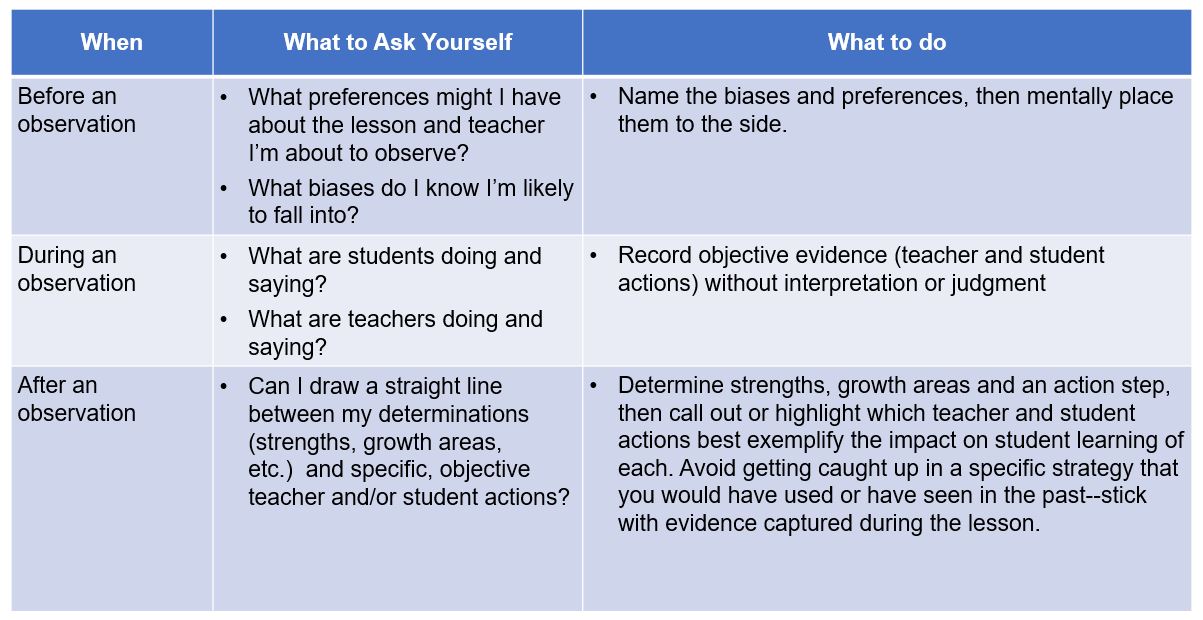Posts Tagged ‘Coaching’
Are You a Leader Feeling Stuck Right Now? Ask Yourself These Questions
Leaders make sense of things for others, untangling knots of confusion and ambiguity. This responsibility compounds during a crisis and is even harder when you are feeling like a mess yourself!
To “un-mess” myself, I like to use a strategy that worked for me as a kid – some good old-fashioned self-talk – ala Lev Vygotsky. My grown-up version of self-talk takes the form of questions that I ask and answer myself (I only occasionally do this out loud). The good news is they’ve also worked well for my colleagues and the people I coach – and I hope they will for you too.
1. Am I keeping the mission and values central to every decision I am making? Remembering why you do the work and what you stand for–and will not stand for—are critical to good decision-making and productivity in a crisis. We all need to be grounded or anchored, and this question always gets me back to center.
2. What can I simplify at work, in my life, and for my team? Accomplishing even the simplest things can seem insurmountable when your world is turned upside down. Our economy shutting down, communications rhythms changing, and having your whole “way of working” change overnight has had pretty serious ripple effects. A strong leader works to simplify things for themselves and for their team. Doing so can focus a team and allow them to even feel motivated with newfound direction.
3. How can I work collaboratively to identify bias, blind-spots, and inequities in our decisions and work without thwarting decisiveness? Even if it isn’t within your normal mode, you’ll have to move fast to make decisions and to give direction in crisis. Acting on instinct and doing so confidently provides what seems most needed – guidance. However, our instincts are inherently biased and we have blind spots. We can’t let the need to provide guidance and decisiveness over-ride informed decision-making. Take a second, ask a trusted colleague, mentor or team-member to check your thinking and make sure it’s someone who thinks differently and is willing to challenge you.
4. How am I adding value or support during the interactions that I have? If you’re leading a team, it’s likely that you’re getting bombarded with questions or working to keep people engaged while managing your own stuff (which is very real right now). In this harried time, there’s a big risk that some of these interactions devolve into transactions. Getting things done now is important, but you have to remember that the fight against inequity is an ultra-marathon; and building team and developing people can’t be lost in all of this. Make sure that you are entering conversations and interactions with intention and aiming to add value in as many interactions as possible.
5. Am I keeping my team and those around me appropriately updated (without overwhelming them)? You are likely hearing all sorts of news from every direction – schools are staying closed; the budget situation is going from bad to worse; inequities are deepening, and trauma is reigning. As a leader you have the unenviable position of knowing all of these things. Part of your job is to keep your team updated, but appropriately: giving people the information they need to do their best, transparently, without causing undue stress or concern by sharing too much.
6. How can I consistently be straightforward about where we are and what we still don’t know while still having relentless hope about the future? Mandela taught us that courage was not the absence of fear but the triumph over it; and Stockdale taught us that a brutal honesty about our realities paired with an unwavering confidence that we’ll prevail is key to thriving. Leaders must be clear about both the challenges we’re facing and have confidence that we’ll win in the end—because we have to. Pragmatic optimism is the key, especially in a time when, more than ever, people need the truth and hope.
Getting to clarity is hard enough to do on your own right now, much less for a team or your entire organization, but it’s sorely needed. Engaging in some disciplined reflection before or while you act will ensure that you, and more importantly, your teams and stakeholders will have a much clearer pathway forward – which is exactly what we need right now.
– Jeremy
Special thanks to Gallup and Impact Ladder for inspiring some of these questions.
Don’t You Want to Stay? Virtual Stay Conversations as Key Teacher Retention Strategy
Teacher and staff retention is a common concern we hear from school leaders in “normal” times. One of the most efficient and lowest cost methods we have found for encouraging great teachers to stay is by holding “stay conversations”. A stay conversation is an informal chance to share how much you appreciate a teacher’s work, and to directly ask them to stay at your school for the following school year. Stay conversations don’t take much effort, but they have a big impact. When teachers were asked why they left their school, a common response was simply that no one asked them to stay.*
A stay conversation usually happens in a regularly scheduled one-on-one meeting with the teacher. Stay conversations should begin early in the year, ideally before winter break. Leaders can and should continue to communicate value and priority to teachers throughout the spring. This way, if teachers are presented with an opportunity to leave their school, they know how much they are valued and are less likely to leave.
That’s how stay conversations might proceed in normal times. These, however, are not “normal” times. The challenge and uncertainty of the pandemic makes retaining teachers even more critical. Just because we are all working virtually, leaders should not stop holding stay conversations. In fact, the best practices for stay conversations still apply: keep the conversation brief, affirm how much you value the teacher, and articulate how important they are to your students and school. Be honest about the challenges of remote teaching and uncertainty of what the fall might look like. Then share why the teacher is an important part of the team, especially in this uncertainty. Strong teachers are providing a lifeline to families and students right now, and they will continue to need your great teachers when school restarts in the fall. Finally, ask the teacher directly to stay at your school next year.
Ideally you are touching base with each teacher individually on a regular basis during this time of remote teaching and learning. These one-on-ones can be quick check-ins to ask the teacher how things are going for them, and how you can support them. And they are a great time to say directly how much you value the teacher’s work, and ask them to stay next fall.
P.S. If you need a soundtrack to your stay conversations, try this pop, or R&B, or classic rock, or country, or early 90s style (my personal favorite)!
-Jessica
*From The Irreplaceables, TNTP, 2012.
Jeremy Abarno, Welcome To The Hendy Team!
We’re thrilled to announce that Jeremy Abarno, former Chief Talent Officer of DREAM Charter Schools in NYC, joined the Hendy team in October 2019. Jeremy will specialize in school leader coaching and development, network leader coaching (especially talent and academics), curriculum development and training, and comprehensive talent strategy and implementation. Jeremy is the smart, thoughtful person you want to help you solve problems and we are so happy he’s bringing his many talents to support our partner organizations and to continue to make our Hendy team stronger.
Jeremy started as a teacher in East Harlem in 2000 and has dedicated his career to the children of New York City. He served as the Principal at PAVE Academy public charter school. Jeremy was the Managing Director of Mathematics and later Talent at Ascend Public Charter Schools in Brooklyn, a network of nine schools serving more than 4,000 students in central Brooklyn. Before joining Hendy Avenue, Jeremy was the Chief Talent Officer of DREAM in East Harlem. In this role, Jeremy led the development of DREAM’s overall talent strategy including recruitment, professional development, workforce planning and human resources for DREAM’s schools, afterschool and community programs. Jeremy holds a Master’s in Special Education from City College and a School Building Leader license from Baruch. He is a graduate of New York University in elementary education. Jeremy lives in Brooklyn with his wife and three children.
Listen Up: Hendy Avenue on EdPOP Podcast
Curious to learn more about Hendy Avenue Consulting? Our very own Jessica Wilson sat down with the host of EdPOP to talk about our mission, recent projects and how talent strategy can make the difference for kids across the country.
Three Steps to Avoid Common Observation Biases
We all have biases. Whether picking an ice cream flavor or choosing to take the scenic route rather than the highway, we all operate with mental models that place disproportionate weight on certain factors that move our judgment in favor of one option when compared to another.
When observing and evaluating teacher practice, there are numerous opportunities for biases to creep in. Just think of all the factors that go into a lesson: the subject, grade, school, teacher, time of day, lesson structure, materials used and more. An observer may think to themselves, “the students were well-behaved for the first class right after lunch”. A different person observing that same lesson may think, “if I was teaching this class, I would have used a different text.” Both of these sentiments may be true, but they have to be placed aside before conducting a visit so that observers can focus on objective teacher and student actions.
In short, great observers, coaches, and evaluators must identify, then set aside, biases in order to fairly and accurately evaluate and develop teacher practice.
Common biases include:
- Confirmation bias: the tendency to search for or interpret information in a way that confirms one’s preconceptions,
- Halo effect: the tendency for a person’s positive or negative traits to “spill over” from one area of their personality to another in others’ perceptions of them, and
- Mirror bias: the tendency to judge performance as “good” if it is “like I would have done it.
A full table of common observer biases with examples can be found here: Observer Bias Examples
In order to mitigate the impact of these biases, great observers should ask themselves three questions:

Round 3: Looking Back, Looking Ahead
In our previous two posts (here and here), Sarah and Grant shared reflections on the past year and projects they are looking forward to in the coming months. To bring us home, Jessica shares lessons learned on working through complexity and opportunities to lead with appreciation.
What I learned: I have spent most of my career in education supporting and working in large bureaucracies, namely large urban districts and state education agencies. Just prior to joining Hendy Avenue I was in senior leadership in one of the largest school districts in Ohio. Each of the organizations I’ve worked with in the past have faced challenges, and I tended to chalk those up to organizational complexity, and the difficulty that comes with arriving at solutions when you must invest a large number of people and perspectives in the strategies. After spending my first year with Hendy working with diverse organizations and districts, I came to appreciate that the challenges I faced in past contexts are not so different from those faced by clients of all sizes. I’ve learned that it’s often not only the scale and bureaucracy that causes the challenges we face in K-12 education, and that we can learn a lot from organizations of different sizes and types in finding solutions. As we partner with our clients this year, we are excited to continue to bring lessons learned from all shapes and sizes of districts, states, schools and networks to arrive at solutions to problems.
What I’m excited about: I am so happy to get to continue to partner with Independence Mission Schools in Philadelphia. Having attended Catholic schools as a child, I have a great appreciation and admiration for the work IMS is doing for some of Philadelphia’s most deserving students. We learned a lot from IMS’ leaders and teachers as we supported them last fall to implement their new instructional framework, and to modify that framework to fit their Catholic culture. Now, I’m excited to continue to support IMS leaders as they deeply invest in teachers through teacher leadership. This project has been a welcome opportunity to explore how others are solving a problem, learn more about the context, strengths and opportunities in IMS schools, and devise a program that makes a difference for teachers, and students, across the network.
Round 2: Looking Back, Looking Ahead
In our last post, Looking Back, Looking Ahead: Lessons Learned and What’s to Come in 2018-19, our founder Sarah shared insights on the difficulty of leading change and the excitement around re-engaging with one of our first partners.
This week, we hear from Grant:
What I learned: Historian and philosopher Will Durant said, “we are what we repeatedly do. Excellence, then, is not an act, but a habit.” Durant’s much-quoted line rings true in most endeavors, especially in efforts to drive change. Over the past year, we’ve seen the power of habitual communication–to teachers, school leaders, regional administrators–in sharing consistent messages, building shared understanding and demonstrating competence. Nothing derails stakeholder buy-in more than mixed messages or a lack of information! Habitual communication requires consistent content, format, and tone through a single channel at a regular, expected frequency. In Houston, we’ve supported KIPP in the development of a weekly message to School Leaders around implementation of Teacher Pathways. Each Friday, leaders know they will receive updates, shout outs, resources, and reminders to guide the week ahead. In Delaware, we’ve launched a monthly newsletter for district leaders on DPAS_II, the state’s teacher evaluation system, with a consistent agenda including deadlines and professional development opportunities. These habitual communications do more than provide information, they demonstrate competence and care for colleagues and trust between stakeholders. As you think about the programs you’re leading, consider how you can habitualize communication as a repeatedly do.
What I’m excited about: In 2014, KIPP Texas – Austin began a comprehensive effort to reshape teacher effectiveness and retention through the development of a Teacher Career Pathway. Knowing that great teachers drive student achievement, Austin’s Teacher Career Pathway develops, recognizes and rewards excellent educators so they will get better and stay longer. This fall, the first cohort of Distinguished Teachers will be announced; a group of accomplished educators who have demonstrated consistent gap-closing results for kids, impeccable teaching practice and exemplary professional contributions to the school community. We cannot wait to celebrate these remarkable educators!
Looking Back, Looking Ahead: Lessons learned and what’s to come in 2018-2019
As consultants, our role is to guide our partners to make informed decisions and to successfully meet their goals. We also prioritize building the knowledge and skills of our partners and they tell us that they learn a lot from working alongside us. In turn, we learn so much every day from the incredibly smart and diverse partners we have the good fortune to work with!
As we reflect on the past and look ahead to the new school year, we are grateful for all that we have learned from our clients. In our next couple of blog posts, each Hendy team member will share something he or she has learned and something we’re excited about it. It’s going to be a great year!
To kick us off, read below from our founder, Sarah Rosskamm:
What I learned: Change is hard. Often times the solution is to prepare for change, engage stakeholders, continuously communicate the “why”, work with influencers, plan for challenges and ultimately to just keep going even when it gets tough. There are times, however, when the solution is to pause, reflect and change course. In working with one of our partner charter networks this year, we learned that sometimes the most courageous and best answer is to stop doing something. In this case, our partner was eager to build a teacher career pathway. They took many important steps to get there, had buy-in from leaders and momentum from teachers believing it was valuable. However, they also had budget changes, shifts in capacity and new demands of their attention. As a result, they smartly decided to pause. They stopped putting their attention into the pathway and instead narrowed the scope of their focus to implementing a highly effective evaluation and development structure that would help their teachers to grow and enable them to target their professional learning activities. They focused on laying a foundation that would immediately benefit teachers through continued growth, and will ultimately allow them to move more quickly toward a pathway if and when they choose to pick it up again. It wasn’t easy (for the network or for the Hendy team) to not complete our original shared goal, but it was the right thing to do for their teachers and students.
What I’m excited about: Hendy Avenue’s very first consulting project was supporting the Delaware Department of Education as they considered revisions to their teacher evaluation rubric. After considering several rubric options based on the best of the available rubrics at the time, the Delaware team, similar to the team described above, decided to pause and learn more before making changes to a statewide tool. So, we shifted course and supported four charter schools in Wilmington to design and implement an alternative evaluation system for their teachers that would utilize this new rubric. I worked closely with the leaders in those schools for several years and together we instituted an alternative system that is now used in a growing number of Delaware schools through their Alternative Evaluation system. I am so excited that five years later, after learning a great deal about the use of the current rubric and about the alternative system, Delaware leadership is eagerly partnering with teachers, leaders and other stakeholders to revise the rubric to ensure the tool is well-aligned to new standards and meets the needs of teachers across the state. I’m also thrilled the state has very wisely decided to prioritize involvement of teachers and leaders in the process and to take the time necessary to ensure it’s a positive and welcomed change for their well deserving teachers. And I’m even more excited that Hendy Avenue will be partners in engaging stakeholders, designing, piloting, revising and ultimately building a rubric that helps teachers and leaders be the very best they can be for their students.
Put Excellence at the Heart of Performance Management
Performance management, at its core, sets expectations. It puts a stake in the ground for what “good” looks and sounds like in the classroom and serves as the baseline of teacher observation rubrics. Effective performance management is more than diagnosing current performance; it supports teachers to articulate an actionable, clear trajectory toward excellence. Ultimately, a vision of good teaching and learning must be at the heart of any performance management system.
Common Pitfall: Framework Without Vision
Too often schools and districts launch a performance management system by creating or selecting a rubric without consideration of core instructional priorities. Enthusiasm and urgency, while helpful, can lead to less than ideal system design.
For example, simply adopting an existing framework because it is “proven” or “research-based” might not actually lead schools and teachers to excellence: what might be excellent teaching in one context might not be true in another setting. Creating a framework from scratch in a vacuum, separate from instructional priorities, isn’t likely to lead teachers to excellence either.
This doesn’t mean that adopting an existing framework is the wrong strategy, or that creating something new won’t get leaders and teachers where they need to be. It does mean, though, that this work must be grounded in the core realities of instruction necessary to move kids.
Ground Performance Management in a Vision for Excellent Instruction
Co-design and co-own by instructional leaders. Defining excellence for as complex a role as teaching requires a team of individuals, with different areas of expertise and focus. While very often, the development of teacher evaluation systems lives within talent/human resources, great systems strategically draw in additional stakeholders. For quality operations, a talent leader should drive and own the design and implementation of a performance management framework. At the same time, this work should be a shared priority between leaders of talent, academics and school management functions in a network or district. Instructional leaders working in schools daily must be the core authors and implementers of expectations for teachers.
Measure what matters. If teachers are held to expectations through a framework that aligns with core instructional priorities, schools are more likely to see improvement in the areas that matter most for students. If a solid instructional vision grounds all decision making, then curricular resources, training, and other supports will naturally stem from that vision. As teachers are supported to meet expectations via appropriate the resources, materials, and training, student learning will flourish.
Lead from your vision. Consider the following questions, and strategically engage others to ensure answers reflect the perspectives of a broad range of stakeholders:
- What are our prevailing beliefs within our system about students, and the role teachers play in their success?
- What do the instructional standards require from our students? And then, by extension, from our teachers?
- In classrooms where good teaching and learning is happening, what are teachers doing? What are students doing?
- How does this differ for different students? Different contexts?
- How do we ensure that the performance management system we design reflects our vision of excellent teaching?
- Who will own this work? How will we ensure that leaders from talent and instruction both continue to be involved?
Let us know what you think in the comments below!
-Jessica
Designing Evaluation Frameworks with Development at the Core – Part II: Raising Rubric Rigor
This post is the second in a series on how innovators are reimagining the design and implementation of evaluation and development frameworks. To read our first post in the series, on the impact of frequent observations, click here.

Most teacher evaluation systems today include direct observations of teacher practice by an administrator, in which the administrator determines ratings by assessing what they observed against a common performance rubric. It is challenging to capture the complexity of teaching in a single document, however strong rubrics have the capacity to set clear expectations, establish a common language, and chart a course for development over time.
During our work with school systems across the country, we have seen a few common challenges with widely-used rubrics:
1. Structure: Rubrics can be too long, wordy, and easy to master.
When rubrics are too lengthy, they can be overwhelming or intimidating to educators, fail to prioritize high-leverage teacher actions over lower-impact strategies, take too long for observers to complete and are challenging to norm across multiple raters. Additionally, when rubrics are too “easy”–that is when basic instruction with minimal impact on student learning aligns to language at the highest levels–we rob educators of a true pathway for growth in their careers and limit their potential for excellence.
2. Framing: Rubrics generally focus only on teachers.
When rubrics describe only what teachers are doing and saying they fail to take into account what matters most: the impact of instruction on students. This can limit the value of observation feedback and lead to misalignment between observation ratings and other components of an evaluation framework.
3. Content: Rubrics are often not aligned to today’s raised academic expectations.
When rubrics do not call for rigorous instruction aligned to core content standards (Common Core, Next Generation Science, etc.) they miss the opportunity to set expectations for learning at the appropriate bar. Similarly, as our knowledge of social-emotional learning, cultural competency, and technology expand, many rubrics have yet to adapt and account for new knowledge and skills.
In the face of these challenges, innovators are creating a new normal for observation rubrics. Through our partnership with school systems across the country, we have seen that there is no one right way or perfect rubric. Rather, systems need to consider their unique culture, expectations, observer skill level and existing structures to find or develop a rubric that will work best for them.
DREAM Charter School: DREAM prioritized finding a streamlined observation rubric that would be appropriately rigorous as teacher advances along their career while less cumbersome than the tool they had previously been using. Following research into available tools and piloting of a select few, DREAM identified the TNTP Core Teaching Rubric as the right resource: it was aligned to academic content standards, written in the form of student outcomes, and best of all, was only four pages long! DREAM revised some language to incorporate school-specific competencies that drive their unique student and adult culture. Following the first year of implementation, nearly 80% of teachers said the rubric defines excellent instruction well.
KIPP Houston Public Schools: The original and largest KIPP region is currently piloting the Reach to Rigor rubric, a new tool created in-house that defines academic and cultural expectations for teachers and students. The rubric is broken down into four parts with only the most critical components of great instruction included. The rubric language also includes both teacher and student actions, to ensure that instructional moves by the teacher are only deemed high-quality if they have the desired effect on student thinking and behavior.
Achievement First: One of the first movers in formalizing a career pathway for teachers, Achievement First has refined their approach to observation and feedback over time. The network developed and launched an updated AF Essentials Rubric that was intentionally designed to be concise, clear, focused on student actions. The rubric is aligned to the Common Core and expectations of Advanced Placement courses, shifting more emphasis to intellectual rigor and deep student thinking. The rubric includes both “foundational” (e.g., tight classroom or kids on task) and excellence (e.g., investment and deep student thinking) criteria.
What are other innovations in observation rubrics? Add your ideas and/or experiences in the comments section below.







